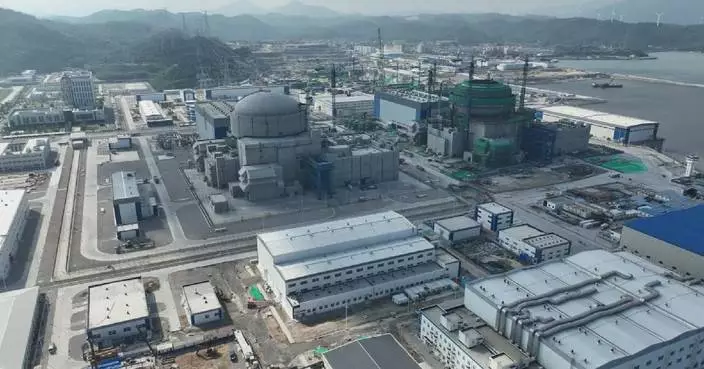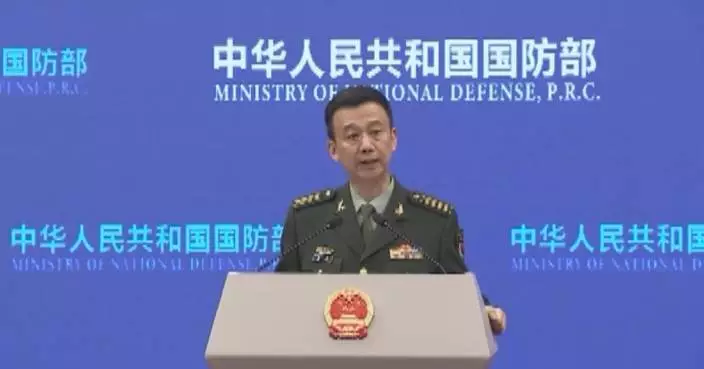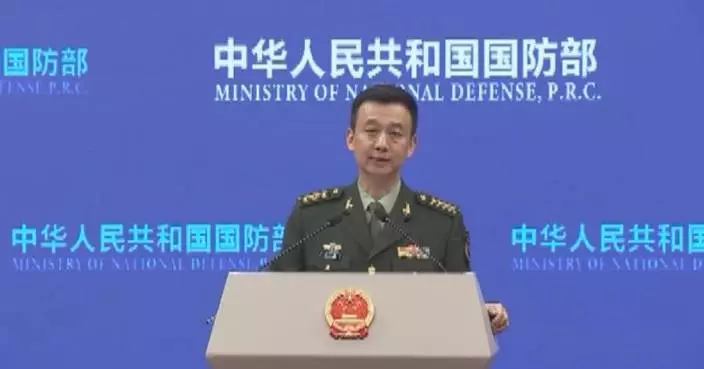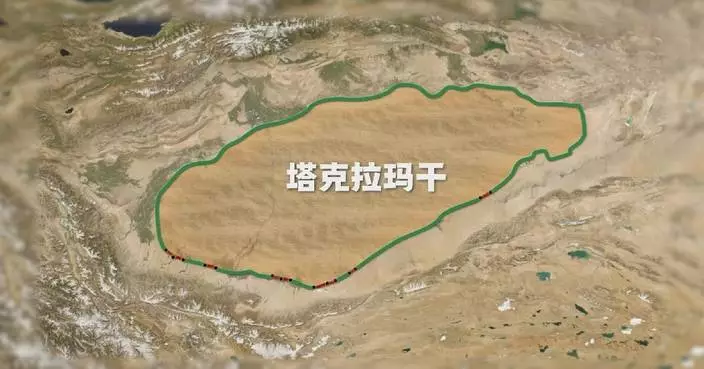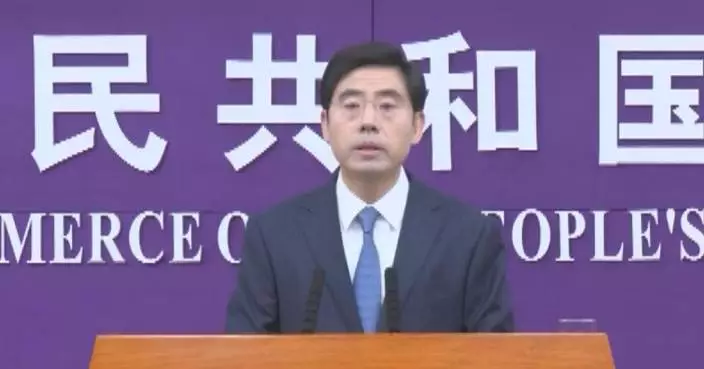Xi Jinping, general secretary of the Communist Party of China (CPC) Central Committee, visited a coastal village during his inspection of Dongshan County in Zhangzhou City, east China's Fujian Province on Tuesday to learn about local efforts in advancing rural revitalization across the board.
Aojiao Village is located in Chencheng Township in the southeastern part of Dongshan County, covering an area of 6.83 square kilometers and with the sea on three sides.
By leveraging its own resources, the village has made spectacular achievements in rural revitalization.
"In our Aojiao Village, we follow the new blueprint outlined by the General Secretary, focusing on the 20-character guideline: prosperous industries, pleasant living environment, cultural civility, effective governance, and affluent life. Now, most villagers live a good life with houses in the village, apartments in the city, cars for transportation, and savings in the bank," said Lin Huazhong, Party secretary and Village Committee director of Aojiao Village.
By adopting a series of measures, the environment in the village has been greatly improved, drawing more and more visitors.
The village currently has 88 large power steel fishing vessels, 38 seafood processing enterprises, 117 seafood e-commerce companies and 41 homestays.
"The entire village has become increasingly clean and beautiful, attracting more and more tourists," said Lin Hubin, a villager who runs a homestay.
"By applying the experience gained from the Green Rural Revival Program, the village has become more beautiful. Additionally, the development of e-commerce and cultural tourism has boosted its popularity," said Liu Congjie, an associate professor of the Gu Wenchang Academy of Leadership.
Xi, who visited the village in 2001 when he worked in Fujian, was delighted to see tremendous changes that have taken place in the village over the past 23 years.
To promote rural revitalization, it is necessary to capitalize on advantages and make good use of local marine resources, he said.
Leveraging its prominent coastal environment advantages, Aojiao Village capitalizes on coordinated development of five leading industries -- marine fishing, aquaculture, seafood processing, e-commerce and rural tourism.
"We have three traditional industries: marine fishing, seawater aquaculture, and seafood processing. Utilizing these resources and local featured industries, we developed two emerging industries: seaside homestays and seafood e-commerce. In 2016, Aojiao Village had only a few e-commerce businesses, but now there are 117, with last year's sales reaching 350 million yuan," said Lin.
The livestream has also offered a platform for consumers outside the village to learn more about the village, from its fishing progress to the seafood production process.
"Our live streams not only showcase products but also highlight fishing boats, processing factories, and our product laboratories and standards. This allows consumers to see exactly where the raw materials for their purchases come from and what production standards are followed," said Xu Yubing, a local villager.
For Lin, the secret behind the village's rural revitalization lies in the emphasis on talent development.
"Talent is crucial for rural revitalization. Sustainable and deeper development in any area relies on professionals, because they have vision and are innovative with broader perspectives," said Lin.
In 2023, the collective income of the village reached 1.73 million yuan (about 243,000 U.S. dollars), with an average per capita disposable income of 58,000 yuan (about 8,150 U.S. dollars). It has been honored as a national-level Advanced Village and one of the most beautiful fishing villages in China.

Coastal village in east China's Fujian achieves rural revitalization by leveraging local resources
The Chinese government issued an action plan on Wednesday to reduce logistics costs and boost economic efficiency, with the goal of lowering the ratio of social logistics costs to GDP to around 13.5 percent by 2027.
By 2027, the country expects to further optimize the structure of goods transport, and strengthen the national logistics hub system and modern logistics service network, said the plan issued by the general offices of the Communist Party of China Central Committee and the State Council.
China will further optimize its national cargo transport system, with the goal of raising the share of railway freight volume and railway freight turnover to about 11 percent and 23 percent, respectively, by 2027. Port container transport via rail and water is also expected to maintain strong growth.
"The ratio of total social logistics costs to GDP reflects both the cost efficiency of the logistics sector and the organizational quality of the industrial and supply chains. In 2023, this ratio in China was 14.4 percent. Based on China's 2023 GDP, a 0.9 percentage point decrease from 14.4 percent to 13.5 percent would cut total logistics costs by over one trillion yuan (about 138 billion U.S. dollars), generating significant corporate profits," said Lu Chengyun, deputy director of the logistics department at the Integrated Transport Research Institute of the National Development and Reform Commission.
To effectively improve logistics efficiency and cut costs, many logistics hub cities across China are introducing new initiatives, focusing on areas such as improving multimodal transport systems, establishing direct freight train services, and ensuring the open sharing and connectivity of logistics data across different platforms.
Huai'an City in east China's Jiangsu Province is home to the province's largest inland river port. This year, Huai'an Port partnered with leading global shipping companies to link domestic inland river routes with international ocean shipping lines, creating a more efficient and convenient logistics channel for import and export businesses.
"In the past, goods from inland areas were usually transported by road first and then shipped by sea. Now, the process begins with inland river transport, followed seamlessly by sea transport, which reduces the time and procedures for goods transport, cutting the average logistics cost per container by nearly 50 percent. Besides, integration and facilitation measures for customs clearance, such as direct cargo pick-up at the ship, immediate loading upon arrival at ports, and the same vessel for both domestic and international shipments, have all contributed to reducing transport time," said Yang Shan, a foreign trade staff member from a Huai'an-based shipping company.
Starting in 2024, the Hunan-Guangdong-Africa rail-sea intermodal train service, featuring shorter transport time, more stable operations, and lower costs, has begun operating on a weekly schedule. Freight trains carrying products such as new energy vehicles and machinery parts depart from Zhuzhou City in central China's Hunan Province, heading directly to Nansha Port in Guangdong Province in the south where the goods are prepared for export to Africa.
"Previously, our Hunan-Guangdong-Africa rail-sea intermodal train service didn't have a direct route. Now, with the new service, the transport time from Zhuzhou to Guangzhou has been cut from 72 hours to just 20 hours. We are also continuously optimizing rail freight costs, and through resource integration, we have reduced logistics costs by about 2,500 yuan (about 345 U.S. dollars) per container," said Zhang Jian, chairman of a Zhuzhou-based logistics company.
In Zibo City of east China's Shandong Province, real-time logistics data of bulk commodities is monitored and analyzed on trading platforms. Such platforms can monitor the status of cargo trucks throughout the entire process, from loading and transport to unloading, enabling more efficient logistics planning and cost savings.
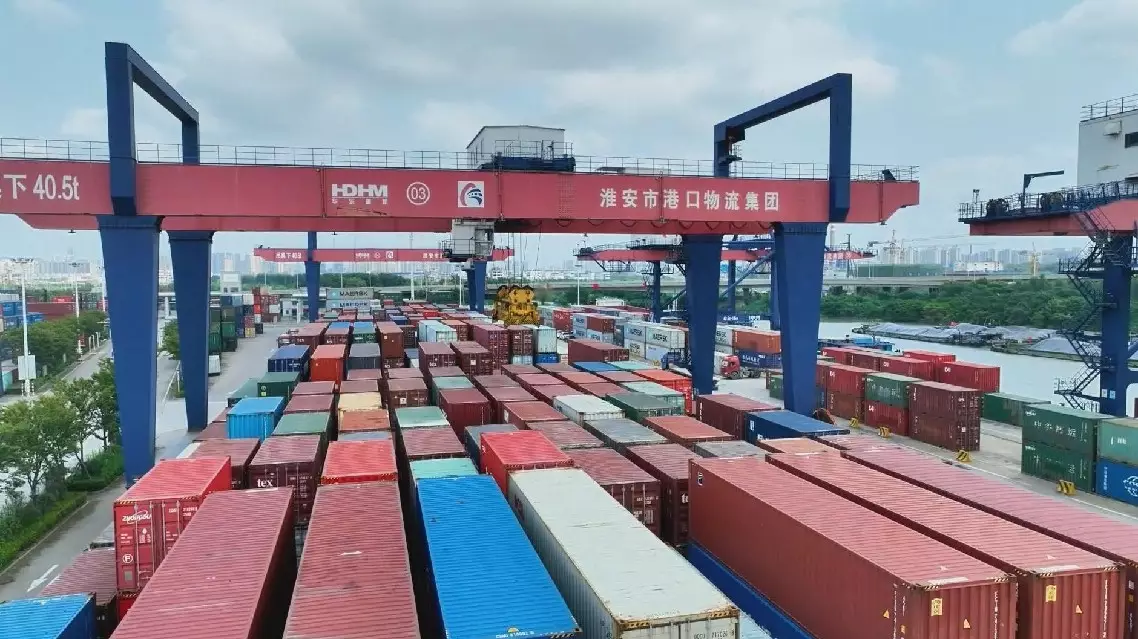
China issues action plan to cut national logistics costs





